Aberdeenshire is an intriguing mix of ancient history and modern agriculture that creates real planning conflicts for those seeking the breath-taking beauty of the western highlands. Nowhere else in Scotland is as densely populated with castles and ancient stones, and while the landscape here isn’t as ruggedly mesmerizing as the Isle of Skye, Wester Ross, or Lochaber, it has a pastoral pleasantry that wraps around these ancient places like a gift bow.
One of the most amazing aspects of this rich density of history is that many of the ancient places aren’t even marked on maps. You have to scour the internet to identify these places in farm fields, lonely hills, and even front yards! But once you’ve done the homework to find your targets you’re in the market for some enthralling exploration.
Before my travels around Aberdeenshire last spring I did just this (picture Gandalf blowing dust from scrolls beneath Minas Tirith) and winnowed down my chosen sites to a handful along my route. One of the favorites I turned up was the Picardy Stone, a two-meter tall Pictish symbol stone near the town of Insch, not far from the main A97 road running between Aberdeen and Moray.
Leaving the outskirts of Insch and proceeding down an oak-lined lane between two farm fields, I soon noticed a small enclosure near the road. I pulled over and easily found a towering stone — not all that different from the Maiden Stone‘s situation — thrust out from a bed of crushed gravel at the end of an emerald field. In the distance I could see Dunnideer Hill, which is a great hike itself.
The origin of the Picardy Stone’s name is lost to history, but what isn’t lost is the stone’s original erecting place because it’s still here. This is pretty unusual in Scotland — stones fall over, get moved by irascible farmers, and eventually find their way into glass enclosures or museums. This monolith is nominally protected by a gate that really only serves to keep out livestock, so I was able to get up and close and personal with this magnificent piece of history.
We know precious little about the Pictish stones. We can catalog the enigmatic symbols that decorate the Picardy Stone, but we can’t interpret them. In fact, the signboard accompanying the stone posits no less than three meanings for the symbols in three sentences.
We do know that the stone was probably erected around 600 AD, and…yep, that’s the extent of our knowledge. The Picts reused many symbols on their stones, like the double-disc and Z-road appearing on the top of the Picardy Stone. Beneath them you’ll see the Z-rod again, this time with the serpent.
What does it all mean? Are they pictographs like hieroglyphics? Are the stones burial markers? The boundaries of land ownership? Something far less mundane and much more mystical?
The Picardy Stone is unique in another way. The remains of a burial cairn and an empty grave-shaped pit were found next to and under the Picardy Stone.
I stood here awhile soaking in the historic magnificence and sensing the subtle breezes. Words don’t do justice to places like this. There’s a power here, mostly forgotten, largely still present, waiting for an open mind to see it with a different eye.

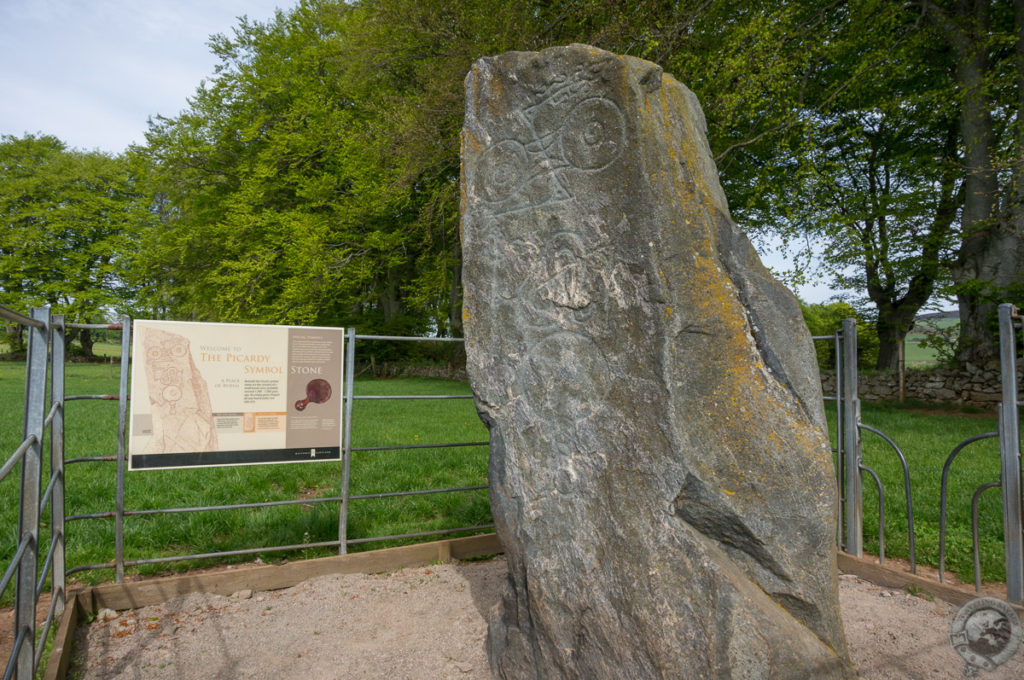
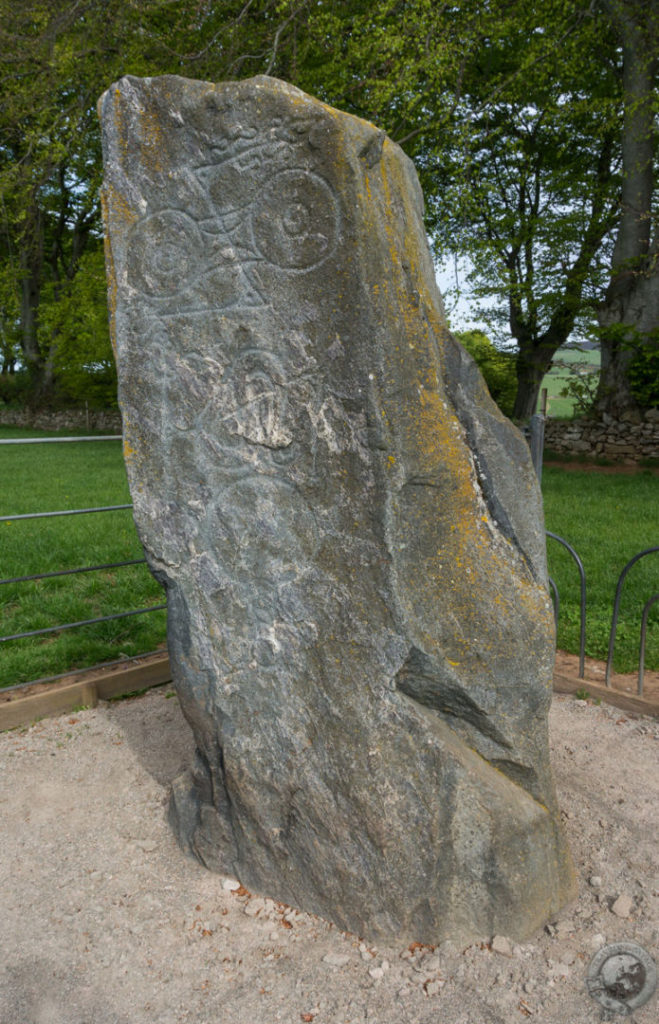
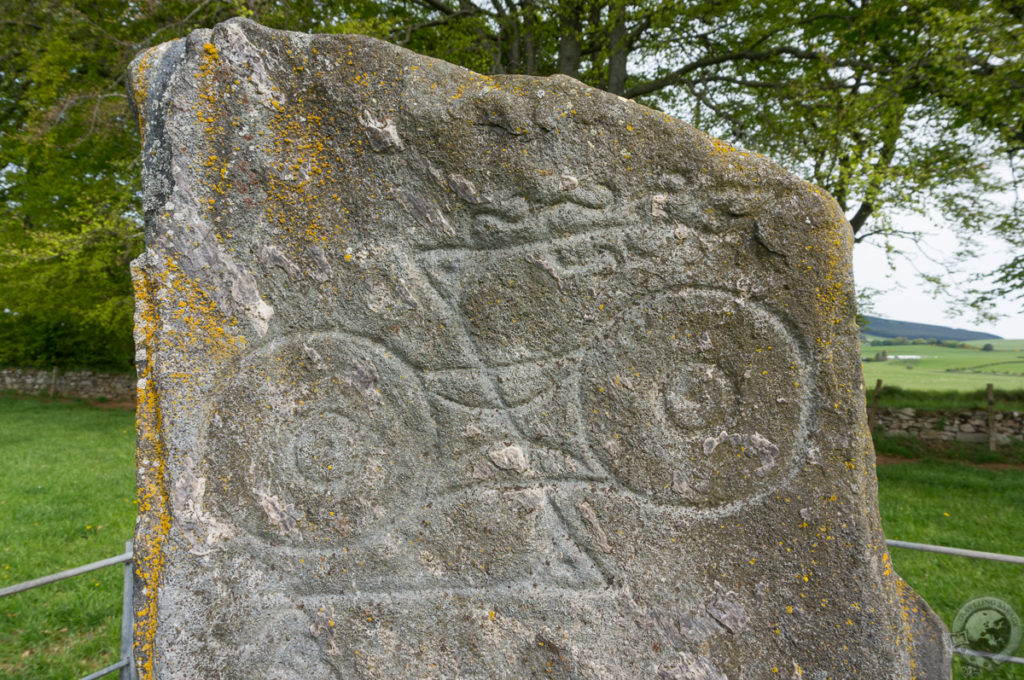
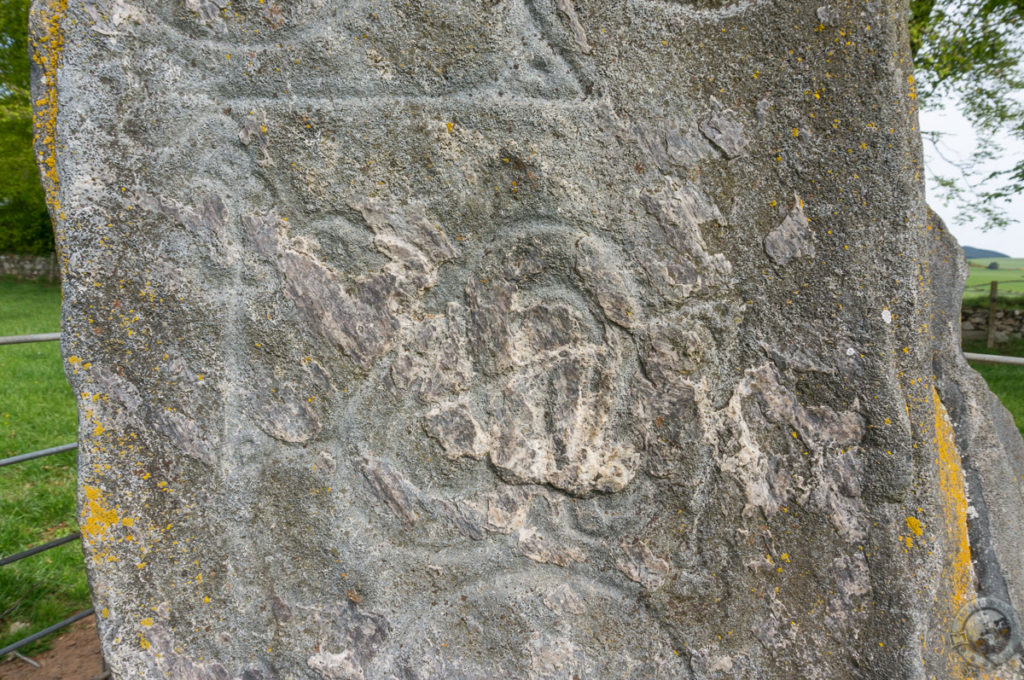
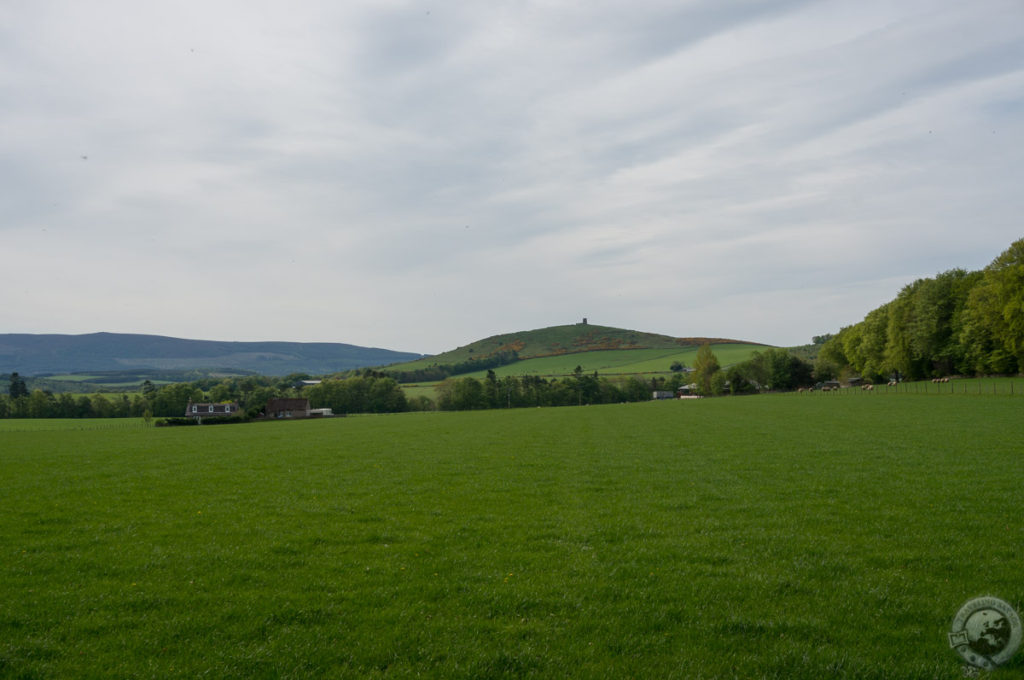
I strongly recommend to anyone interested in seeing the Pictish carved stones to visit the Pictish Carved Stone Museum in the town of Miegle, not far from Stirling or Perth. There you can see a large collection of carved stones from around Scotland. You can also buy an inexpensive book that shows clearer pictures of the stones and describes what some of the images represent. You can also find out where other carved stones are located in Scotland outside of museums. In fact, many carved stones are indeed outside, often in the middle of cow or sheep pastures, exposed to the elements that will eventually wear away their images. You can’t take the stones home with you, but if you buy the book you will be able to enjoy looking at the stones long after you’ve left Scotland.
I live near here 🙂
Fun fact about the Picardy Stone – if you walk down the field (not the track) towards the farm, your words echo off the landscape. Its not the beech trees or the buildings which interfere with the sounds, but the surrounding hills.
Very cool!